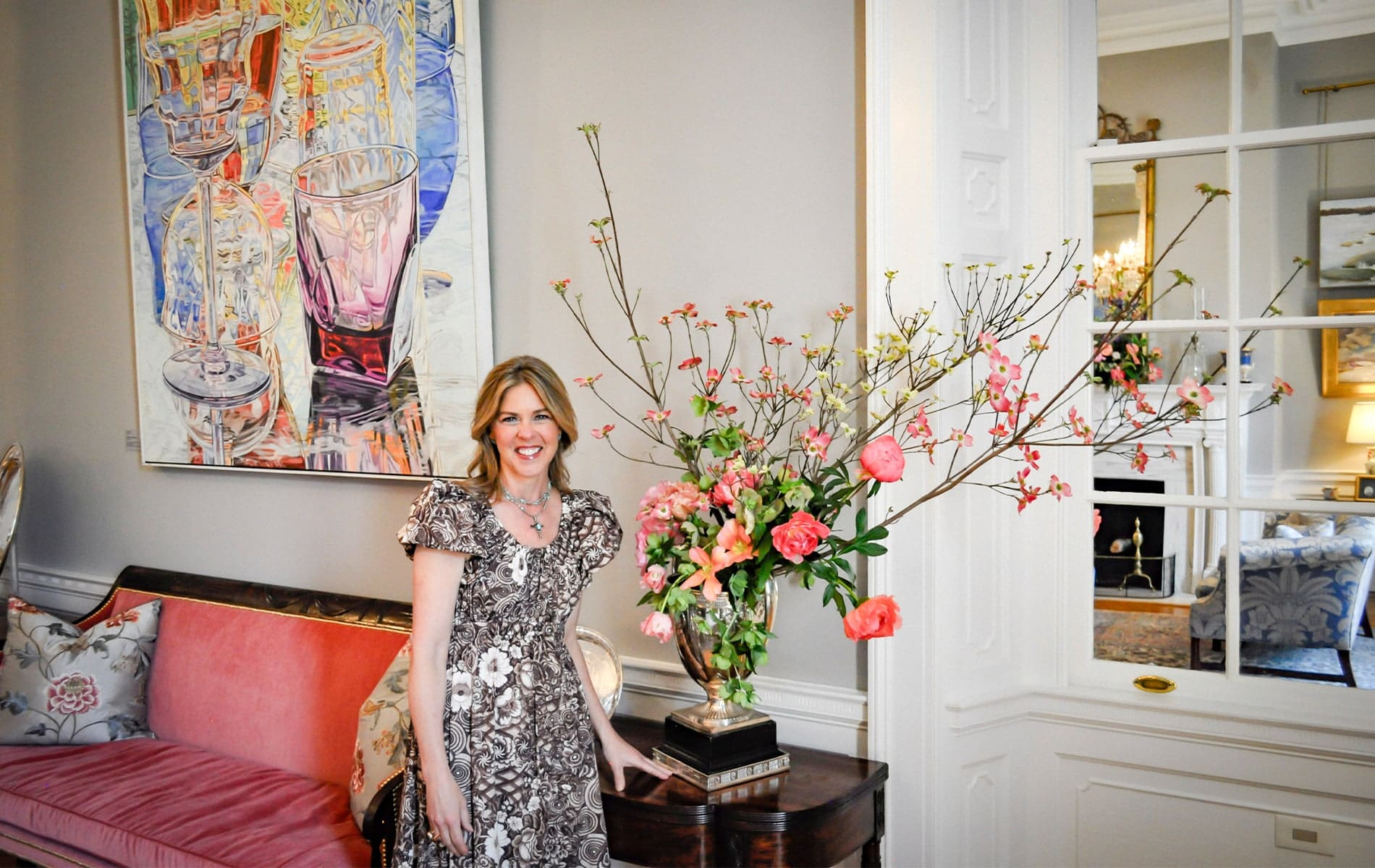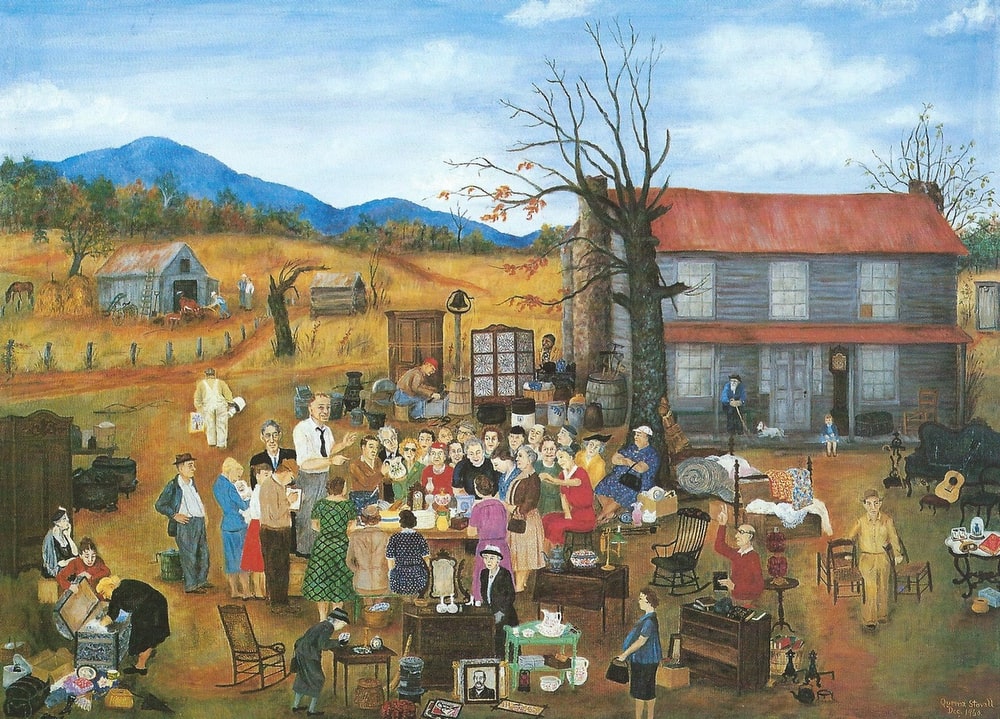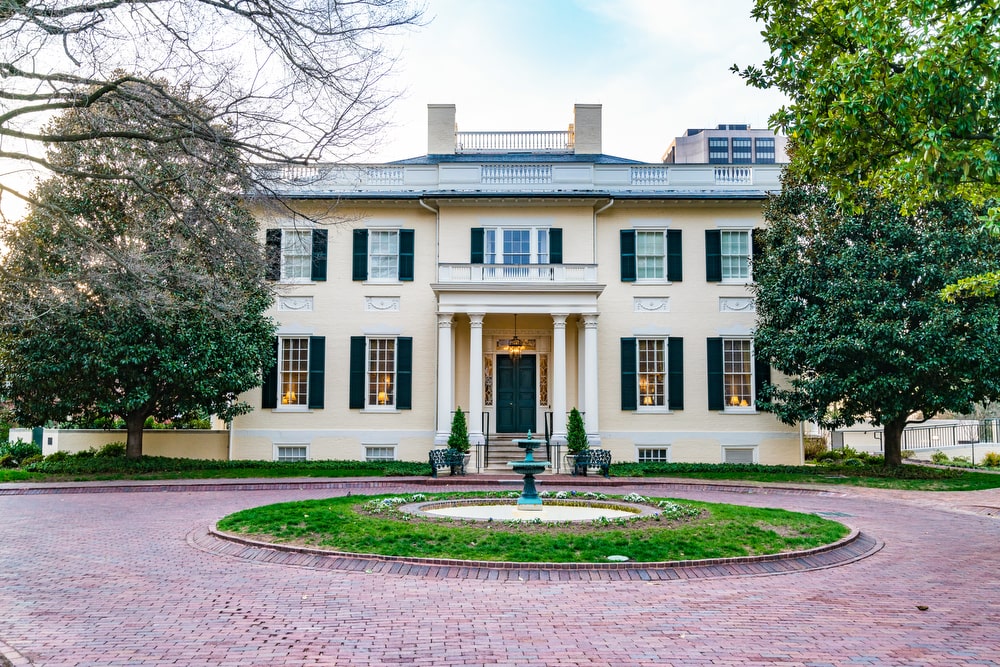
vie-magazine-suzanne-pollak-column-october-2023-hero
Suzanne Youngkin, First Lady of Virginia, in front of August and the Red Glass by Janet Fish
Influencing through the Art Experience
By Suzanne Pollak | Photography courtesy of the Executive Mansion
When the First Lady of Virginia, Suzanne Youngkin, and her husband, Governor Glenn Youngkin, moved into the Executive Mansion in 2022, one of the first things she did was transform its walls.
As one might expect to find in the country’s oldest continuously occupied Executive Mansion, the rooms were lined with paintings of Virginia statesmen and Virginia landscapes set in heavy gold frames. But Mrs. Youngkin saw things differently. She wanted a broader, newer story to be told about the Commonwealth of Virginia through the work of living as well as historic Virginia artists, and she wanted to reopen the Federal-style landmark, designed in 1813 by prominent architect Alexander Parris, which had been closed to the public since the pandemic.
Mrs. Youngkin asked Judy Boland and Ann Goettman, who sit on the Citizens’ Advisory Council on Furnishing and Interpreting the Executive Mansion (CAC), to realize her vision by creating the Art Experience. The duo was an interesting choice: Neither one is a museum curator. But while Boland’s background is in psychology and Goettman’s is in marketing, both are passionate about art. Although the women were not well acquainted at the time, they found themselves agreeing on which artists and paintings to suggest for the first exhibition, Spirit of Virginia.
Even though the work of many of the selected artists would not typically be found hanging on the walls of a Governor’s Mansion or a museum, the Art Experience was a huge success. As a result, a second Art Experience, Do What You Love in Virginia, is now installed on the Mansion’s first floor and features the likes of William Clarke, Margaret Gregg, Sharon Campbell, AB Jackson, and more.

The End of the Line (1960) by Queena Stovall (1887–1980) hangs in the North Ballroom.
Boland and Goettman reached out to more than a dozen museums from across the state as well as individual artists, inviting them to lend a painting for the year. Without much wall space, they were forced to be judicious, reviewing thumbnail submissions of pieces museums were willing to loan for a year. Choosing a work of art from a thumbnail often led to a surprise, and when finally seen in person, the paintings were overwhelmingly beautiful.
Using a new system suggested by Alicia Starliper, registrar at the Library of Virginia, Boland and Goettman used templates of the exact size of the paintings to visualize where everything would go. Occasionally, once paintings were hung in their planned spots, the curators needed to reconsider placement. Lighting was often the issue, as the Mansion is lit by chandeliers, not the pin spot museum lighting typically used for art. Other times, it was the position—the art hung too high or too low. In all cases, the two women mostly relied on their intuition: Does the painting feel right?
The goal of the Art Experience is to showcase Virginia, for viewers to feel connected to the state’s history, to feel represented, and to leave with a sense of pride in being a Virginian. The exhibition highlights various genres and mediums, always focused on Virginia artists and themes. It is a living display that will evolve as additional works of art become available and different parts of the Virginia story become the focus.
As a tourist, I can report how the exhibit impacted me: It was electrifying. The space somehow feels like both a lived-in house and a house museum—an Executive Mansion built to receive hundreds and a private house comfortable for tea for two. Yet, it is neither a museum nor a traditional home; it is an iconic institution that can change Virginia’s people. The Art Experience makes the first floor come alive, tells a story, creates a feeling, and contemporizes the Executive Mansion. The takeaway message for me is that something unique is going on there.
I was especially struck by a large (six-by-five feet) contemporary tablescape, August and the Red Glass by Janet Fish, hung on a ballroom wall leading into the dining room. The painting is on loan from the Virginia Museum of Fine Arts, where it was a gift from Virginians Sydney and Frances Lewis.
Although I expected to see isolated statesmen in gold frames—and I did—when I saw Fish’s painting, I thought, “Whoa! Something interesting is happening here.” A tablescape painting tells a story about connecting and knitting a community together around a table. Not only do I want to be invited to that table, I want to know who had this vision and view. It was educational and inspiring, precisely what Suzanne Youngkin envisioned and what Judy Boland and Ann Goettman delivered on behalf of their state and the Governor’s Executive Mansion. You should go.

The Virginia Executive Mansion in Richmond | Photo by Paul Brady Photography/Shutterstock
ARTISTS
William Clarke is a self-taught folk artist from Blackstone, Virginia, who narrates his rural African-American heritage of old tobacco farming, country stores, baptisms, funerals, and the daily life of his childhood.
Margaret Gregg, a member of Round the Mountain Artisan Network, created a beautiful quilt that hangs in the ladies’ parlor. She is the artist in residence at The William King Museum in Abingdon, Virginia.
A.B. Jackson, whose eye-catching portrait of Abe Lincoln hangs in the front hall, earned an MFA from Yale University and, in 1967, after teaching ten years at Norfolk State University, joined Old Dominion University as a full-time professor and its first Black faculty member.
A magnificent and striking large painting of a horse and rider by artist Sharon Campbell from Madison, Virginia, graces the wall of the south ballroom.
Queena Stovall, a self-taught folk artist from Lynchburg, combined careful detail with intense color to produce realistic scenes of life in the country. Collectively, her paintings are a documentation of bygone life in rural Virginia.
— V —
Suzanne Pollak, a mentor and lecturer in the fields of home, hearth, and hospitality, is the founder and dean of the Charleston Academy of Domestic Pursuits. She is the coauthor of Entertaining for Dummies, The Pat Conroy Cookbook, and The Charleston Academy of Domestic Pursuits: A Handbook of Etiquette with Recipes. Born into a diplomatic family, Pollak was raised in Africa, where her parents hosted multiple parties every week. Her South Carolina homes have been featured in the Wall Street Journal Mansion section and Town & Country magazine. Visit CharlestonAcademy.com or contact her at Suzanne@CharlestonAcademy.com to learn more.
Share This Story!
KEEP UP WITH THE LATEST STORIES FROM VIE
















































































































































